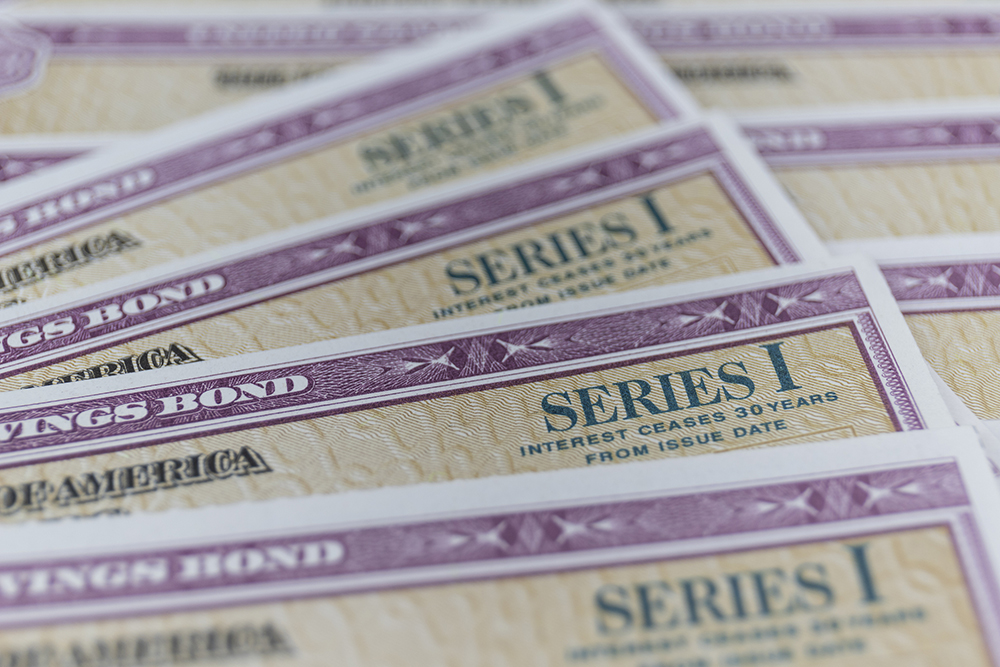The Financial Planner
I Bonds: New Interest Rate of 9.62% as of May 1st!
When I wrote about I Bonds in my last blog, the interest rate was 7.12%. With the current CPI numbers, the six-month rate has gone up to an astonishing 9.62%. If you have extra cash you are not going to need to use for at least one year or more, you may want to consider buying I Bonds.
The Treasury Direct website (https://www.treasurydirect.gov/), has a lot of helpful information, and it is a good idea to do your research to make sure you understand how everything works before you purchase them.
Key Points:
- There is an annual purchase limit of $10,000 per person. Each person must have their own account (note that a financial advisor cannot purchase these for you — you must be the purchaser).
- Trusts can also be purchasers.
- Interest rates are for 6-month intervals, with new rates on May 1 and November 1.
- You have to hold them for 12 months at a minimum.
- If you cash out after one year but before five years, you will lose the last three months of interest as a penalty.
- If you buy the bonds near the end of a month, you receive interest as though you owned them for the whole month.
- They are based by the full faith and credit of the U.S. government.
- Interest is compounded twice per year at six-month intervals based on the issue date and is paid when the bond is redeemed.
- I Bonds are exempt from state income tax, and interest is tax-deferred until they are redeemed.
- You buy them on the Treasury Direct website (https://www.treasurydirect.gov/), and you must keep track of your sign-in credentials and account number information.
Additional Information About I Bonds
One thing that is unique about I Bonds is their interest structure, which consists of a “Fixed Rate” and “Inflation Rate” that, together, make a “Composite Rate” — the actual rate of interest that an I Bond will earn over a six-month period. The current Fixed Rate for I Bonds is 0%, but the inflation rate, which is tied to the consumer price index, is now an annualized 9.62%, making the Composite Rate 9.62%. The Fixed Rate can never drop below 0%, so the money invested will not lose nominal value.
The Inflation Rate component will help ensure that your money keeps up with inflation, which is a more competitive deal than most savings accounts and money market accounts are currently offering.
I Bonds have a 30-year maturity. They can be redeemed after being held for at least 12 months. If they are redeemed between one year and five years after issue, you will lose the previous three months of interest. One way to look at this is to consider it to be a 15-month minimum holding period. I Bonds will have at least one rate change in a 12-month period. It is possible the rate could go down if the rate of inflation falls. However, even if rates do go down, the interest is still likely to be higher than current rates on savings accounts and 1–2-year CDs.
I Bonds may be given as gifts to children. A parent can open an account for a child who is under age 18. The annual I Bond purchase limit of $10,000 is based on the recipient, not the giver. If I Bonds are used for qualified higher education expenses like tuition and fees at most colleges, universities, and vocational schools, they are also federally tax-free.
You can also use up to $5,000 of your tax refund to purchase I Bonds, and this amount is over and above the $10,000 per person annual limit. However, if you have already filed your 2021 return, you will have to wait until next year.
Who Should Consider?
People looking for a long-term, safe investment with inflation protection and a strong yield should consider I Bonds. It is also a good choice for those holding more cash in a savings account than they need for living expenses and that they will not touch for at least one year. I Bonds are not as liquid as a savings account or other investment like a stock, mutual fund or ETF, so plan ahead carefully.
It may be a good choice as a gift to children that can be used in the future for education expenses. The maximum amount is under the annual gift exclusion amount of $16,000 (for 2022), leaving room for other gifting such as into 529 plans.
On the flip side, the annual per person maximum may deter high net worth investors for whom $10,000 per person or $20,000 per couple is a very small percentage of their portfolio. The fact that interest is not paid out until the bond is redeemed may also be a deterrent for those looking for regular interest payments for income purposes.
If you decide to go ahead, know that you are not alone. The Treasury issued $1.4 billion of I Bonds in March of 2022 alone.1
References
1. Wells, C. (April 14, 2022). A year of inflation-beating yields with no risk? Time may be running short. Bloomberg. Retrieved from https://www.bloomberg.com/news/articles/2022-04-14/how-to-buy-i-bonds-time-may-be-running-out-to-lock-in-high-inflation-yields
Suzanne Tudor
Suzanne has over 35 years of experience in financial services, retiring in 2024. She was a senior investment consultant and director of financial planning at Allodium Investment Consultants, located in Minneapolis, MN. Suzanne was passionate about helping families and business owners to strategically develop and carry out their financial, legacy and philanthropic plans. Since retiring, Suzanne has had extra time for activities she loves, such as spending time with her family and making DIY home improvements.
The information provided is for educational purposes only and is not intended to be, and should not be construed as, investment, legal or tax advice. Allodium makes no warranties with regard to the information or results obtained by its use and disclaim any liability arising out of your use of or reliance on the information. It should not be construed as an offer, solicitation or recommendation to make an investment. The information is subject to change and, although based upon information that Allodium considers reliable, is not guaranteed as to accuracy or completeness. Past performance is not a guarantee or a predictor of future results of either the indices or any particular investment.

